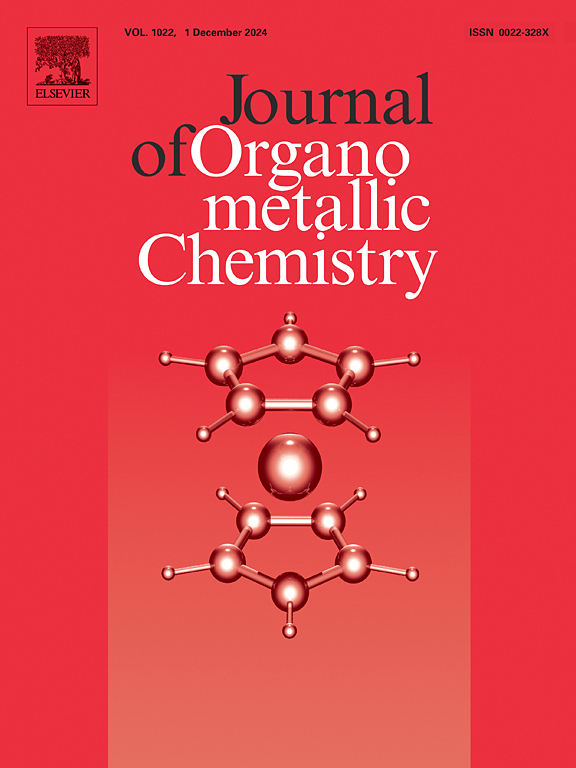介孔Carbon@ZnCuFeS纳米颗粒光催化降解有机污染物通过过氧单硫酸盐活化
IF 2.1
3区 化学
Q3 CHEMISTRY, INORGANIC & NUCLEAR
引用次数: 0
摘要
过氧单硫酸盐(PMS)是一种氧化剂,广泛应用于硫酸盐自由基高级氧化工艺中,用于消除水中的有机污染物。可见光辅助PMS活化在污染修复中具有重要的潜力。本研究通过水热处理生成Carbon@ZnCuFeS纳米颗粒(NPs),并利用其在可见光下激活PMS,从而有效降解污染物。NPs使光催化和PMS活化之间的协同相互作用成为可能,NPs/光/PMS组合在广泛的pH范围内表现出效力,特别是在中性和微酸性环境中。反应速率遵循伪一阶(PFO)动力学模型,不同体系的反应速率常数(0.1056 min−1)不同,突出了光/NPs/PMS体系加速RhB降解的优越效率(95.8%)。自由基猝灭实验发现,SO4•-和•OH是活性物质,h +、1O2和•O2−是污染物降解的主要贡献者。•O2−产生进一步活化的PMS,通过涉及SO4•-和H2O/OH−的相互作用产生更多•OH。RhB的降解在中性pH下最有效,在酸性环境中由于H +的干扰而有适度的降低,在碱性环境中由于电荷排斥和PMS失活而有相当大的下降。该系统具有显著的可重用性;然而,随着RhB浓度的升高,降解效率和反应速度降低。NPs/Light/PMS系统的功效在几种水类型和污染物中进行了评估,对可见光辅助PMS活化的机制产生了重要的见解,并认可了一种环境可持续的有机污染物降解方法。本文章由计算机程序翻译,如有差异,请以英文原文为准。

Mesoporous Carbon@ZnCuFeS nanoparticles for photocatalytic degradation of organic pollutants via peroxymonosulfate activation
Various activation mechanisms have been developed for peroxymonosulfate (PMS), an oxidant that is extensively employed in sulfate radical-based advanced oxidation processes for the elimination of organic contaminants from water. Visible-light-assisted PMS activation presents significant potential for pollution remediation. This study generated Carbon@ZnCuFeS nanoparticles (NPs) via hydrothermal processing and employed them to activate PMS under visible light, resulting in effective pollutant degradation. NPs enabled a synergistic interaction between photocatalysis and PMS activation, with the NPs/Light/PMS combination exhibiting efficacy across a broad pH spectrum, especially in neutral and slightly acidic environments. The reaction rate follows a pseudo-first-order (PFO) kinetic model, with rate constants (0.1056 min−1) varying across systems, highlighting the superior efficiency of the light/NPs/PMS system in accelerating RhB degradation (95.8 %). The radical quenching tests identified SO4•‒ and •OH as reactive species, with h⁺, 1O2, and •O2− as the primary contributors to pollutant degradation. The •O2− produced further activated PMS, generating more •OH via interactions involving SO4•‒ and H2O/OH−. RhB degradation is most efficient at neutral pH, with modest decreases in acidic settings due to H⁺ interference and considerable drops in alkaline surroundings due to charge repulsion and PMS deactivation. The system demonstrated remarkable reusability; nevertheless, degradation efficiency and reaction speeds diminished at elevated RhB concentrations. The efficacy of the NPs/Light/PMS system was assessed across several water types and contaminants, yielding significant insights into the mechanics of visible-light-assisted PMS activation and endorsing an environmentally sustainable approach for the degradation of organic pollutants.
求助全文
通过发布文献求助,成功后即可免费获取论文全文。
去求助
来源期刊

Journal of Organometallic Chemistry
化学-无机化学与核化学
CiteScore
4.40
自引率
8.70%
发文量
221
审稿时长
36 days
期刊介绍:
The Journal of Organometallic Chemistry targets original papers dealing with theoretical aspects, structural chemistry, synthesis, physical and chemical properties (including reaction mechanisms), and practical applications of organometallic compounds.
Organometallic compounds are defined as compounds that contain metal - carbon bonds. The term metal includes all alkali and alkaline earth metals, all transition metals and the lanthanides and actinides in the Periodic Table. Metalloids including the elements in Group 13 and the heavier members of the Groups 14 - 16 are also included. The term chemistry includes syntheses, characterizations and reaction chemistry of all such compounds. Research reports based on use of organometallic complexes in bioorganometallic chemistry, medicine, material sciences, homogeneous catalysis and energy conversion are also welcome.
The scope of the journal has been enlarged to encompass important research on organometallic complexes in bioorganometallic chemistry and material sciences, and of heavier main group elements in organometallic chemistry. The journal also publishes review articles, short communications and notes.
 求助内容:
求助内容: 应助结果提醒方式:
应助结果提醒方式:


